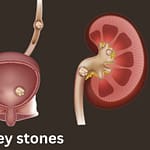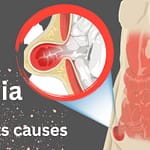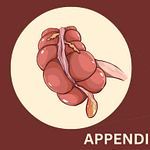
Atherosclerosis Definition medical terms
With this, calcium and various substances begin to accumulate in the arteries, and the
arteries are not narrowed, as it seems.
Arteriosclerosis causes
- Due to obesity.
- Abundance of cigarettes, tea, etc.
- Consumption of foods that are high in calories.
- There is more carnivore.
- Has diabetes.
- By not exercising.
- By living an unnatural life.
- This disease is common in older people.
Side effects of atherosclerosis
- Arteriosclerosis.
- High blood pressure
- Body aches.
- Excess cholesterol in the blood.
- Excess cholesterol.
- Gangrene
- Angina (heart pain).
- Paralysis etc.
Homeopathy medicine for arteriosclerosis
- Bright Peacock 6 3x:
There is a very effective medicine for this disease. Do not use it for long, but continue using
it with other medicines.
-
Karnika 6x:
Heaviness in the head. A hot head and cold feet. Spin around.
-
Gym 6x:
Hypertensive nephritis, as hard as wire.
-
Arm Mate 3x:
Angina is joint pain that moves from one joint to another.
-
Arm Peacock 6x:
Heart palpitations, palpitations in the chest, and a feeling of tightness in the head.
-
Arsenic and iodine 33
It is useful for almost all heart diseases. This disease also affects the heart so this medicine is
useful here. Inhalation time cannot be increased. You can also use this medicine along with other
medicines. Often useful.
-
Spy Jelia 630
Heartburn, a sharp pain on the right side. Sparks appeared in front of the eyes. This symbol
represents the guiding principle of this medicine.
Critical criticism does not provide clarity in the material collected from the Midda Assyrians.
-
Natrum IOD 3x
As long as the pulse is soft, the medicine works well.
Nitric oxide in atherosclerosis
The regulation of vascular tone by the fat-soluble labile nitrogen oxide (NO) radical generated
by endothelial synthase enzymes of nitrogen oxide (eNOS) is disrupted by atherosclerosis,
a chronic inflammatory condition in the intima of conducting arteries. This disruption can
put a person at risk of heart ischemia and coronary vasospasm, with anginal discomfort
being the most common clinical symptom. Endothelial dysfunction is increasingly recognized
as an early event in atherogenesis, even though atherosclerotic lesions do not form in the
microcirculation.
Plaques with atherosclerosis can produce an inflammatory environment that induces NO
synthase (iNOS). In some studies, there is still disagreement about whether endothelial
failure results in atherosclerosis.
The majority of the data supports the theory that constitutive NO release from endothelial
cells inhibits atherogenesis. For example, it reduces leukocyte adherence and smooth
muscle cell proliferation. Despite its superiority as a replacement for deficient endothelial
production, inducible isozymes can damage vascular walls when released excessively,
especially combined with reactive oxygen intermediates.
Arteriosclerosis caused by smoking
Heart disease is a major risk factor associated with smoking. As a result, your lungs can
be exposed to harmful chemicals, which can cause atherosclerosis and plaque build-up.
Even occasional smoking can have negative effects on your heart and blood vessels.
In some circumstances, such as in cases of diabetes or cases of women taking birth
control pills, smoking poses an even greater danger. Additionally, if you have other risk
factors for heart disease like high blood pressure, being overweight, or having high blood
cholesterol, smoking can increase your chances of developing heart disease.
Smoking also increases the risk of peripheral arterial disease (PAD), which occurs
when the arteries that supply blood to your brain, organs, arms, and legs become
blocked with plaque. Individuals with PAD are at higher risk of heart attack, stroke,
and coronary heart disease. Second-hand smoke, which is the smoke inhaled by
non-smokers from the burning end of a cigarette, cigar, pipe, or other tobacco product,
can also harm the heart and blood vessels of non-smokers in the same way that
smoking harms smokers.
Risk factors in atherosclerosis
Plaque accumulation risk factors often have connections between them.
Several factors can result in abnormal cholesterol levels, leading to plaque formation.
For instance, smoking and not exercising regularly.
Plaque development is commonly associated with the following causes:
– High blood pressure may damage artery walls, making it easier for
plaque to accumulate.
– Diabetes: High blood sugar levels can harm the arteries’ inner layers
and lead to plaque formation.
In addition to high cholesterol levels, high blood triglyceride levels increase the risk
of metabolic syndrome.
– Poor diet: Eating many saturated fat-containing meals can raise your cholesterol levels.
– Genetic factors: If you are at risk for hypercholesterolemia or an inherited problem
with cholesterol, your genes may play a role.
– Inflammatory conditions: High levels of inflammation can irritate blood vessels in
people with illnesses like psoriasis and rheumatoid arthritis, causing plaque accumulation.
– Older age: Plaque formation usually starts in childhood and worsens as people age.
After age 45, men are more at risk. After age 55, women are more at risk.
Women with endometriosis, polycystic ovarian syndrome, gestational diabetes,
or preeclampsia are at even higher risk.
There is no age limit, race, or body type that is excluded from the
threat of heart disease.










